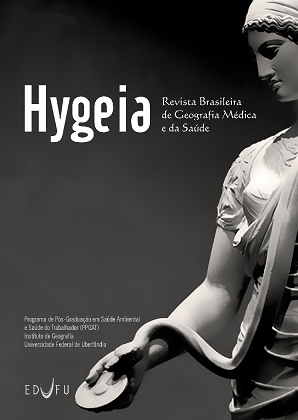THE BEST INDEX TO COMMUNITY HEALTH IS THE PHYSICAL WELFARE OF SCHOOL CHILDREN
DOI:
https://doi.org/10.14393/Hygeia717044Resumo
Compulsory education laws, the gregarious instinct of children, the ambition of parents, their self-interest, and the activities of child-labor committees combine to-day to insure that one or more representatives of practically every family in the United States will be in public, parochial, or private schools for some part of the year. The purpose of having these families represented in school is not only to give the children themselves the education which is regarded as a fundamental right of the American child, but to protect the community against the social and industrial evils and the dangers that result from ignorance. Great sacrifices are made by state, individual taxpayer, and individual parent in order that children and state may be benefited by education. Almost no resistance is found to any demand made upon parent or taxpayer, if it can be shown that compliance will remove obstructions to school progress. If, therefore, by any chance, we can find at school a test of home conditions affecting both the child's health and his progress at school, it will be easy, in the name of the school, to correct those conditions, just as it will be easy to read the index, because the child is under state control for six hours a day for the greater part of the years from six to fourteenDownloads
Os dados de download ainda não estão disponíveis.
Downloads
Publicado
05-07-2011
Edição
Seção
Artigos
Licença
A submissão do texto por meio eletrônico implica a transferência de direitos exclusivos de publicação, por seis meses a partir da data de submissão. A partir da data do aceite para publicação, os direitos se entendem por mais outros seis meses. Ao publicar o texto, a revista se reserva o direito de manter o trabalho permanentemente disponível, permitindo-se ao autor, após os seis meses de exclusividade mencionados, a republicação, em quaisquer outros meios de divulgação, desde que mencionada a fonte original.Como Citar
ALLEN, William H. THE BEST INDEX TO COMMUNITY HEALTH IS THE PHYSICAL WELFARE OF SCHOOL CHILDREN. Hygeia - Revista Brasileira de Geografia Médica e da Saúde, Uberlândia, v. 7, n. 12, p. 1–8, 2011. DOI: 10.14393/Hygeia717044. Disponível em: https://seer.ufu.br/index.php/hygeia/article/view/17044. Acesso em: 13 jan. 2026.








